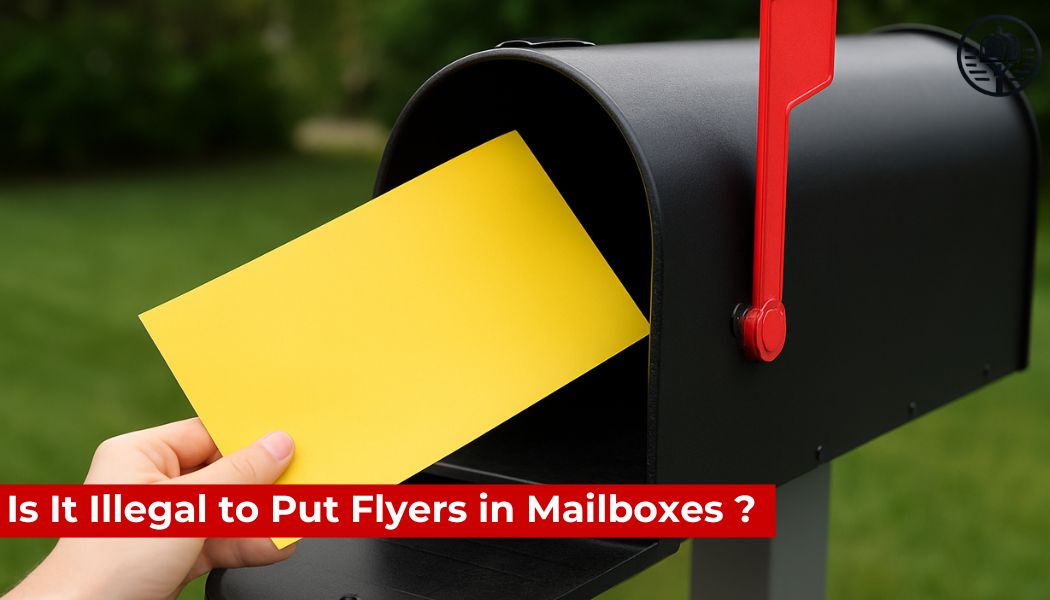When promoting a local business, community event, or political campaign, one of the most common grassroots strategies is distributing flyers. It seems simple enough—print your message, drop it in mailboxes, and hope for results. But a crucial question arises: is it illegal to put flyers in mailboxes?
This article explains the legality of placing flyers in mailboxes in the United States, including what federal law says, potential penalties, and legal alternatives to reach your audience effectively and lawfully.
What the Law Says About Mailboxes
In the United States, mailboxes are protected by federal law. According to the United States Postal Service (USPS), only authorized U.S. postal workers can place items in or on a mailbox. This means that individuals, businesses, or organizations are not legally allowed to place un-stamped materials—such as flyers, advertisements, or brochures—directly inside or affixed to a mailbox.
The relevant regulation comes from Title 18, U.S. Code, Section 1725, which clearly states that putting non-postage-paid matter into a mailbox is illegal and subject to fines.
Why Are Mailboxes Protected?
Mailboxes are considered federal property once installed and in use. The law is designed to ensure:
-
Security of postal mail
-
Consistency of mail delivery
-
Protection from clutter and unauthorized access
This protection helps prevent tampering, lost mail, and privacy issues. The USPS also aims to keep mailboxes from being overwhelmed by unregulated content.
What Happens If You Put Flyers in Mailboxes?
Violating mailbox regulations by placing flyers without proper postage can result in:
-
Fines up to $5,000 for individuals
-
Fines up to $10,000 for businesses
These penalties are enforced by the USPS and are especially common during local election seasons or aggressive marketing campaigns.
Additionally, homeowners may report unauthorized flyer distribution to local authorities or the Postal Inspection Service. Repeat offenders may be subject to further investigation.
Is It Illegal to Tape Flyers to Mailboxes?
Yes. Affixing a flyer, pamphlet, or business card to a mailbox using tape, rubber bands, or clips is also prohibited. The law includes both inside and on the mailbox as restricted spaces.
Even though the flyer is not placed inside, taping it to the mailbox still violates federal law and can result in fines.
What Are the Legal Alternatives?
Just because putting flyers in mailboxes is illegal doesn’t mean you’re out of options. There are several legal and effective alternatives for distributing promotional material:
Door-to-Door Flyer Distribution
Place flyers on doorknobs, in screen doors, or on doorsteps. These methods are legal as long as you're not trespassing or violating any local "no solicitation" rules.
Use Every Door Direct Mail (EDDM)
This USPS service allows businesses to send promotional mail to specific neighborhoods without needing a mailing list. It’s affordable and fully compliant with postal regulations.
Handouts in Public Spaces
Flyers can be legally distributed in public areas such as:
-
Street corners
-
Events
-
College campuses (with permission)
Be sure to comply with local laws and ordinances.
Partner with Local Businesses
Ask local shops or cafés if you can place your flyer on their community board or counter. This can increase visibility without violating any federal laws.
Are There State or Local Laws to Consider?
While the federal rule applies nationwide, some states and cities have additional rules regarding flyer distribution. For example, certain municipalities require permits for door-to-door solicitation or limit distribution during certain hours.
Always check with your local city or county office to ensure your campaign complies with local ordinances.
Why Do Some People Still Put Flyers in Mailboxes?
Despite the law, some individuals and businesses still place flyers in mailboxes either out of ignorance or to save on postage. However, this poses significant risks:
-
Potential fines
-
Damaging your business's reputation
-
Legal consequences if a complaint is filed
Educating yourself about the law helps maintain professionalism and avoids unnecessary trouble.
How to Stay Compliant and Reach Your Audience
Here are a few best practices for legal flyer distribution:
-
Use Every Door Direct Mail for residential coverage
-
Never insert or attach flyers to mailboxes
-
Respect no solicitation signs
-
Get permission when distributing on private property
-
Consider digital marketing alternatives like social media ads or Google My Business
Staying compliant not only avoids legal issues but also builds trust with potential customers or community members.
FAQ – Is It Illegal to Put Flyers in Mailboxes?
Q: Can I put a flyer in someone’s mailbox if I don’t use tape or clips?
A: No. Placing anything inside or on a mailbox without postage is illegal under federal law.
Q: What if the mailbox is open or empty?
A: It doesn’t matter. Even if the mailbox is open or appears unused, inserting a flyer without postage is prohibited.
Q: Can I hang a flyer on the mailbox post, not the mailbox itself?
A: Technically, the post may be fair game if it's on the recipient’s property and not owned by the USPS—but it’s risky. Better to avoid any part of the mailbox assembly.
Q: Are apartment mailboxes treated differently?
A: No. Apartment and community mailboxes are also covered by USPS regulations and must not be used for unapproved materials.
Q: How can I advertise locally without breaking the law?
A: Use USPS Every Door Direct Mail, distribute to doorsteps or community boards, or explore online local advertising.
Final Thoughts
So, is it illegal to put flyers in mailboxes? The answer is a clear yes under U.S. federal law. While flyer distribution can be a powerful local marketing tool, doing it the wrong way—by using mailboxes—can lead to serious fines and legal issues.
To stay effective and compliant, explore legal alternatives like door-to-door delivery, public bulletin boards, and USPS-approved mailings. By respecting the law, you’ll protect your business, maintain your reputation, and still get your message in front of the right audience.

